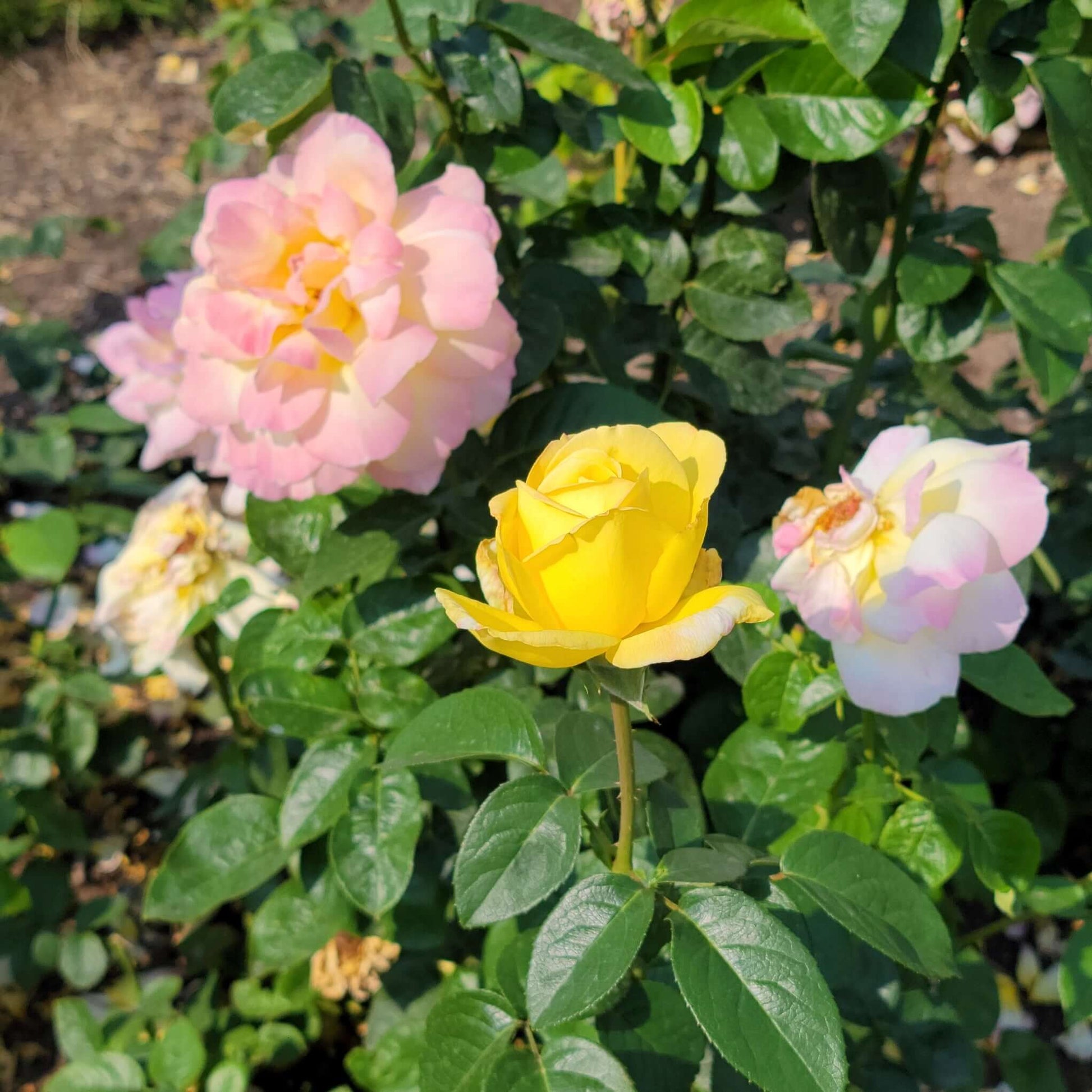
Peace Rose
Rosa 'Peace'
Delivery
24-hour money-back guarantee
Free delivery on orders over $349
Big Project? Call 888-444-1126 for bulk rates!
Rosa 'Peace' is a hybrid tea rose renowned for its soft shades of yellow and pink, along with its impressive full blooms that reach up to 6 inches in diameter, holding 45 petals or more. With its mildly sweet fragrance and strong, straight stems, this rose is ideal for cut flower arrangements. Imagine ‘Peace’ in the garden to soothe the soul and calm the mind.
Also known as ‘Madame A. Meilland’ or ‘Gloria Dei’, the ‘Peace’ rose was introduced to the US in 1945 to celebrate the end of World War II. This bushy, upright shrub features glossy, dark green, leathery foliage. Its large, rounded buds open into lustrous lemon-colored petals edged with rose-pink, blooming in flushes from late spring through fall.
Hybrid tea roses feature long, sturdy stems topped with a single, large bloom that has a classic, elegant shape, making them perfect for floral arrangements.
How large does the Peace Rose grow?
What kind of light does it prefer?
What type of soil does it need?
What are the bloom characteristics of the Peace Rose?
3-6 ft.
3 ft.
Moderate
Pollinators, Bees, Butterflies
Perfect Your Landscape With Expert Help
Customize your yard with confidence. Schedule your free consultation today and bring your outdoor space to life!


